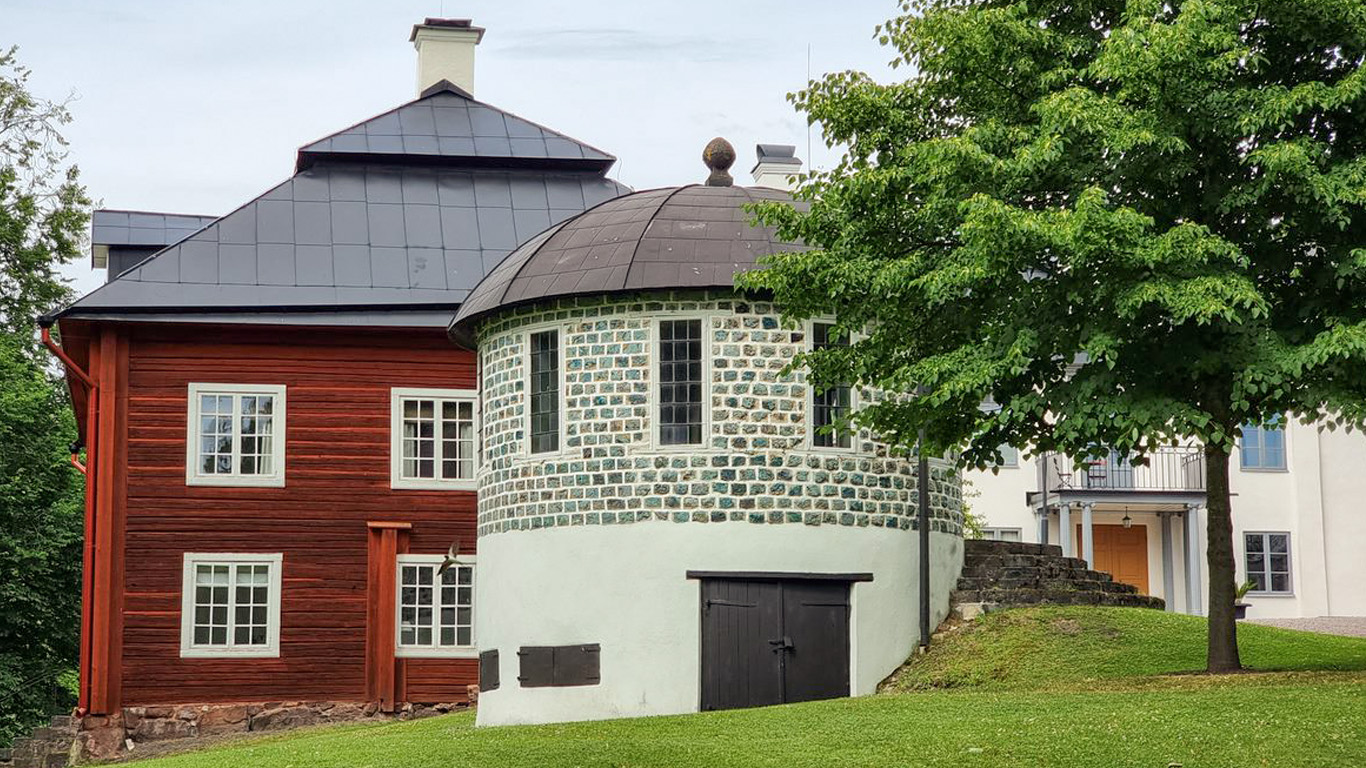The World Heritage Site Engelsbergs Bruk
Designated as a UNESCO World Heritage Site in 1993, a well-preserved industrial heritage.
Sometime in the 1300s, a German miner moved here. His name was Englika, and he built a blast furnace between the lakes Åmänningen and Snyten. The furnace was named Engelsberg after him. He eventually became the grandfather of the famous 15th-century rebellion leader, Engelbrekt Engelbrektsson.
Englika’s family continued working with the blast furnace for several generations. After them, several other mining families took over.
But it was when district chief judge and councilman Per Larsson Gyllenhöök took over the operation in the 1600s that Engelsberg flourished.
He invested in a new blast furnace and a hammer forge and developed iron production to such an extent that it dominated the surrounding region and became one of the most modern ironworks in the world.
Thanks in part to Engelsberg, Sweden became the major iron producer that sustained its entire export economy in the 17th century.
Per’s son Anders later sold the ironworks to the Söderhielm family. They built the charcoal-fired blast furnace that still exists today and also constructed a new two-story manor house with a mansard roof, a common style for manors at the time. Since the Söderhielm family had nineteen children, they eventually expanded the western wing to accommodate everyone. The older eastern wing housed the kitchen. The round towers, built of slag stone, were used as a pavilion and a privy.
At the beginning of the 19th century, both the manor and the blast furnace were modernized again, this time by the owner Gabriel Caspar Timm. After all the reconstructions and expansions, Engelsbergs Bruk eventually consisted of about fifty buildings. Not all were used for iron production—there were also many worker’s homes and a converted smith’s cottage that served as a day laborers’ lodging house, which also contained a tavern.
Avesta Järnverk AB purchased the ironworks in 1916 but shut down production as early as 1919. Without the deep interest of Consul General Axel Ax:son-Johnson and his descendants, it is unlikely that the ironworks would have been preserved.
WORLD HERITAGE
Engelsbergs Bruk is now a World Heritage Site, with all its preserved buildings and even technical equipment from the past. But it is not just the blast furnace that is fascinating here—the beautiful surroundings are also worth experiencing.
Here, industrial facilities and landscaped gardens exist side by side. A tree-lined avenue leads to the manor house, which was built in 1746 to replace an older main building.
FACTS
Engelsbergs Bruk is considered one of the world’s most significant industrial heritage sites and has been on UNESCO’s World Heritage List since 1993.
Below the manor lies the Herrsmedjan (Master Smithy), one of the best-preserved of its kind. Along the ironworks street, you’ll find agricultural buildings that once belonged to the estate, including a granary, stables, and pigsties, as well as the old ironworks office.
Worker housing was built outside the central part of the ironworks.
Engelsbergs blast furnace is one of the few remaining charcoal-fired furnaces in the country. The original furnace stack, just over nine meters tall, was rebuilt in brick and raised by three meters in the 1870s.
Engelsbergs’ blast furnace and forge are unique because the waterwheel, ore crusher, blower, and hammer can still be demonstrated in operation.
The area is privately owned, so please respect the signage indicating where visitors are allowed. The forge can be visited during guided tours. On tour days, the restrooms are open from just before the first tour begins until shortly after the last tour ends.
www.engelsberg.se >
Group tours can be booked via bokning@engelsberg.se





